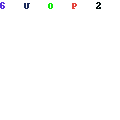Caesarean Section.
Ensure your health following a
C-section or other birth intervention.
Caesarean Sections (or C-sections) are
becoming more numerous every year among my clients.
You may have planned and hoped for a natural vaginal delivery but what happens if complications arise during birth? These complications during labour may result in your baby being delivered by:
You may have planned and hoped for a natural vaginal delivery but what happens if complications arise during birth? These complications during labour may result in your baby being delivered by:
·
Caesarean-section
(C-section).
·
With
the help of vacuum pump or
suction.
·
With
the help of Forceps.
Interventions such as these, when necessary, often save lives. In my experience with Craniosacral Therapy - it helps to eliminate, or minimise, complications that arise as a result of these types of deliveries.
With CranioSacral Therapy, I work on the membranes and cerebrospinal fluid
that surround and protect a person's brain and spinal cord, extending from the
bones of the skull (which make up the cranium) down to the tailbone area (or
sacrum).
The role of this system in the development and performance of the brain and spinal cord is so vital that an imbalance or dysfunction in it can cause sensory, motor and/or neurological disabilities.
A CranioSacral Therapist uses a touch generally no heavier than the weight of a nickel. Skilled practitioners can monitor this rhythm at key body points to pinpoint the source of an obstruction or stress. Once a source has been determined, they can assist the natural movement of the fluid and related soft tissue to help the body self-correct.
I have noticed that most babies (and moms too!) often need assistance following the effects of a difficult labour. One of the reasons for this is that in the ideal birth situation, nature has designed a baby's skull to be compressed as it travels through the birth canal during a vaginal birth.
Babies born by C-section miss out on this vital compression (which helps balance the cranial bones) through the birth canal. Babies born with the use of forceps or vacuum often experience undue stress on the head and face and strain patterns can often develop in their bodies. The euphoria of your baby's safe arrival can mask the stress that your baby has experienced. But soon problems can arise.
You may notice your baby has problems with:
·
Excess
crying.
·
Flat spots
or bulges on the head.
·
Uneven ear
or eye positions.
·
Prefers
feeding on one of their sides.
With Craniosacral Therapy I use specific, gentle touch techniques to assess, resolve and eliminate the restrictions that cause these problems. The light pressure creates deep change - releasing restrictions in the baby's tissue that surrounds the brain and spinal cord. This intervention encourages the infant's body toward a natural alignment.
During the treatment the baby often naturally needs to cuddle, feed or cry as balance is restored and emotion is released in the body. Moms and Dads often feel a sense of relaxation as the baby's CranioSacral system returns to optimum function.
I have found that treatment with CranioSacral therapy benefits all babies following birth - but it is highly recommended for babies who have had birth complications - including Caesarean Sections


